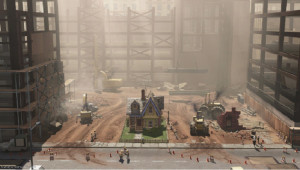I found the reading in Historic Preservation Part 2 to be enlightening and educational, especially in regards to laws and legal cases that have dealt with historic preservation. The discussion between preserving historical information and architecture focuses on the “historic significance,” a term “used to describe a property’s relative importance . . .” (Tyler, Ligibel, Tyler, 135).
Much of Part two deals with the legalities surrounding preservation and begins by saying, “The legal framework for historic preservation is largely based on land use law, with the traditional premise that property owners should have the right to do as they wish with their property.” (121) One significant case in 1926, Euclid v. Ambler Realty Company decided in favor of protective zoning and “overrides the interests of individual property owners,” which changed the tone for future preservation decisions and a change in the way of thinking. Other court cases have decided whether or not land should be preserved for future historic value, such as the decision of Penn Central. It is considered to be historic preservation’s “most important legal precedent.” It was decided in 1978 and it prevented a monstrous 55 story addition to the iconic landmark, Grand Central Station in New York city. This decision by the U.S. Supreme Court made guidelines for how historic sites are preserved and gave legitimacy to cities and governments that preservation is a “governmental goal.” (126)
Historic significance is the term best used throughout part two, as it provides the value of the conservative nature of the remaining book chapters. “A structure’s significance is based on two primary factors: historical or cultural importance and architectural value.” (135) Categorizing these factors about a site’s importance can help us evaluate in terms of historic value and, most important, the integrity . Part of the evaluation, according to the National Registry, involves these seven factors: “Location, Design, Setting, Materials, Workmanship, Feeling and Association.” (138) Certainly in evaluating historical significance, there are so many aspects that can contribute to a site and certain aspects can either add or detract from the evaluation. If a home is original, for example, or if it has undergone remodeling that is not true to its history. Events like relocation of a home can be a negative because the setting may have been of importance and, the prominence of the family that built the home or lived in it for a significant time can be a factor. Certainly the architect is an important factor and age, with a “commonly accepted, and government-supported, criterion for historic significance is . . . at least fifty years old.” (140) As a historian, one of the most interesting categories is National Historic Landmarks, which are a “special category of designed historic structures and properties with exceptional value or quality.” (150) These are places that are of importance to all Americans and one of the most famous is Graceland, the home of Elvis Presley, and also includes Mount Vernon, Pearl Harbor and Alcatraz Island.
The establishment of historic districts is very important in preserving the history and character of certain parts of cities and towns. The National Historic Preservation Act of 1966 gave governments the “power to create regulatory historic districts.” (155) It provided for the protection of properties of historic value but it also serves as a protection for the wrecking ball of redevelopment. It promotes people preserving wonderful homes and buildings and helps to improve property values for entire areas, oftentimes inner city locations. For example, I live near the historic district of the North End in Boise and enjoy the architecture of historic homes and businesses. Buildings downtown such as the fire station on 6th street built in 1902 now houses a nice restaurant after serving the people of Boise. Member of the Idaho Historical Society cleans the bell inside the building weekly. It is because of the dedication of people like them that many of Boise’s historical buildings remain for us to see.

